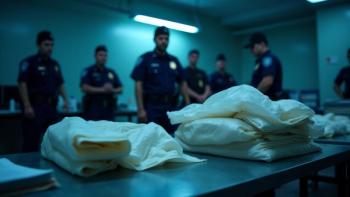
- Spectroscopy-02-01-2008
- Volume 23
- Issue 2
Market Profile: Portable Mass Spectrometers
The concept of portable mass spectrometry has been around for some time, but the realization of such technology has been largely limited until very recently. More than ever before, recent technological advances now make smaller, lighter, and more effective mass spectrometers possible. Such advances will lend themselves to a growing spectrum of applications as well.
The concept of portable mass spectrometry has been around for some time, but the realization of such technology has been largely limited until very recently. More than ever before, recent technological advances now make smaller, lighter, and more effective mass spectrometers possible. Such advances will lend themselves to a growing spectrum of applications as well.
Mass spectrometers that have been designed and designated as "man-portable" have been around for a number of years, with a few models seeing fairly significant success. However, the common limiting factors in these systems were that they were still heavy and somewhat bulky, and many had limited battery power. Over the past few years, several advancements have been made that make possible far smaller, lighter, and higher performance systems, such as miniaturized vacuum systems, miniature mass analyzers based on MEMS (micro electromechanical systems) technology, and improving battery technology. Such improvements are the result of the drive for development in several industries, including security systems and consumer electronics. There are now a number of new systems that are on the market, or on the verge of being introduced, that are based on these improvements.
As portable mass spectrometers become smaller and more capable, the range of potential applications will widen significantly. The primary area of application is currently in security applications, most of which lies with the military. Improved instruments will not only increase demand from this market segment, but will make for far more useful tools in areas such as in-field environmental and on-site forensics analysis, and might even find significant demand in a plethora of niche industrial uses. As performance increases, there is even potential for use in medical and clinical applications. Although total worldwide demand for portable MS was well under $50 million in 2006, it could easily be double that amount by 2012.
The foregoing data were based on SDi's market analysis and perspectives report entitled Mass Spectrometry, February 2008. For more information, contact Stuart Press, Senior Consultant, Strategic Directions International, Inc., 6242 Westchester Parkway, Suite 100, Los Angeles, CA 90045, (310) 641-4982, fax: (310) 641-8851,
Articles in this issue
almost 18 years ago
Surface-Enhanced Raman Scatteringalmost 18 years ago
ICP-MS Detection for HPLC Analyses of Pharmaceutical Productsalmost 18 years ago
Productsalmost 18 years ago
SPIE Defense + Security Conference PreviewNewsletter
Get essential updates on the latest spectroscopy technologies, regulatory standards, and best practices—subscribe today to Spectroscopy.




